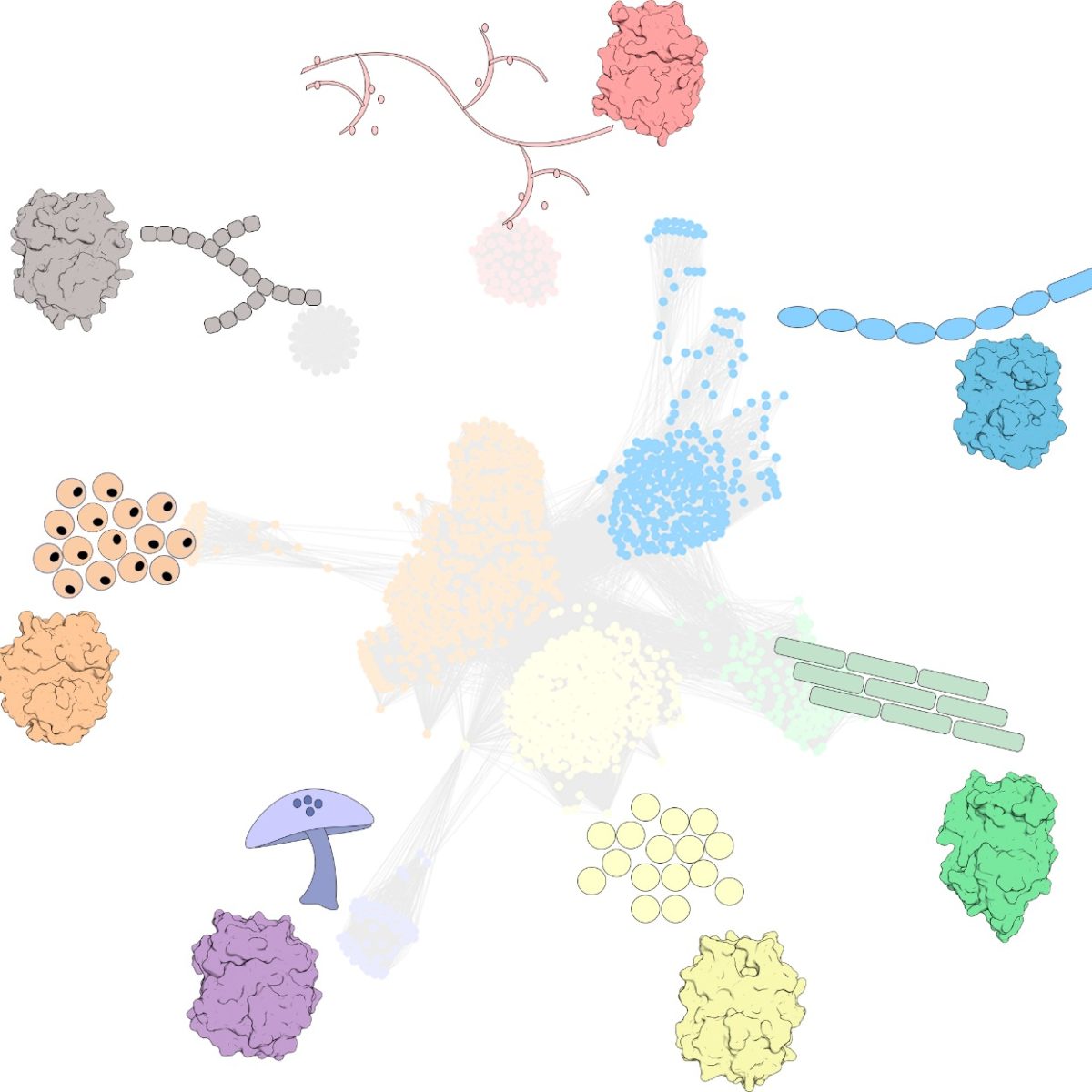
Research reveals new mechanisms and strategies to break plant polysaccharides and generate interesting by-products
Polysaccharides are molecules ubiquitous in nature, serving as a natural barrier for plants, energy sources for algae, and making up the cell wall of fungi. The deconstruction or modification of these polysaccharides is of great industrial interest, as in the textile and paper industry, as well as for the generation of biofuels and renewable chemical intermediates. Currently, the use of these polysaccharides in by-products of industrial interest requires the use of chemical reagents that generate environmental impacts or is carried out by industrial enzymes that are still not very efficient.
Researchers from the Brazilian Biorenewables National Laboratory (LNBR), in the Brazilian Center for Research in Energy and Materials (CNPEM), and collaborators, investigated a family of enzymes found in both bacteria and fungi and revealed new molecules capable of degrading and converting some of these polysaccharides, such as beta-glucans, in products of industrial interest.
The study focused on an unconventional and little-known family of the glycosidic hydrolase (GH) enzymes, capable of processing β-1,3-glucan polysaccharides, a carbohydrate present in algae, bacteria, fungi, and plants.
The discovered molecules demonstrated characteristics that may have consequences in well-known applications. The enzymes can act as food preservatives, given their antifungal action. In animal nutrition, these enzymes may act as facilitators for the digestion of fiber-rich vegetal matter. In the pharmaceutical industry, the enzymes are capable of producing prebiotics, bioactive molecules that have even been studied for the treatment of cancer.
This family of enzymes is still not used by the industry since its activity and mechanisms of action were not known until now. Tested on a laboratory scale, they will now be tested and compared with currently available standards, to verify the possibility of promoting an industrial-scale production of the possibilities seen in a controlled environment.
This work launches a new perspective for industrial biotechnology. In addition to revealing new enzymes, it shows that the enzyme family can act on complex and abundant carbohydrates in plants, algae, and microorganisms and can bind to specific targets in fungi, presenting high catalytic action, potentializing the production a series of bioactive molecules convertible into products for everyday use, in renewable versions.
Among the several analyses carried out, the researchers used the MX2, SAXS1, and SAXS2 beamlines from the Brazilian Synchrotron Light Laboratory (LNLS).
Source: Santos CR, Costa PACR, Vieira PS, Gonzalez SET, Correa TLR, Lima EA, et al. Structural insights into β-1,3-glucan cleavage by a glycoside hydrolase family. Nat Chem Biol (2020). DOI: 10.1038/s41589-020-0554-5
Researchers achieve unprecedented details of the shape, composition and preservation of microfossils
Research investigates new niobium-based materials for improving electrical energy storage